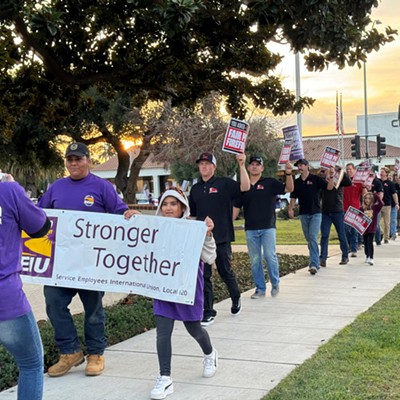On July 30, the U.S. Department of Agriculture (USDA) announced a series of grants and loans it awarded to help upgrade and rebuild rural water infrastructure.
"[The] USDA is committed to being a strong partner to rural communities in building their futures," assistant to the Secretary for Rural Development Anne Hazlet stated. "All people–regardless of their zip code–need modern, reliable infrastructure to thrive, and we have found that when we address this need, many other challenges in rural places become much more manageable."
The funding is provided through the Water and Waste Disposal Loan and Grant program. It can be used to finance drinking water, stormwater drainage, and waste disposal systems for rural communities with 10,000 or fewer residents. The USDA's latest investment totals $164 million and spans 54 projects nationwide.
One of those projects, the only current iteration in this round of funding for California, involves more than $13 million in loans and grants to upgrade a wastewater treatment plant for Quincy and East Quincy, in Plumas County.
Eligible rural communities and water districts can apply online for funding to maintain, modernize, or build water and wastewater systems. They can visit the interactive RD Apply tool, or can apply through one of USDA Rural Development's state or field offices.
In fiscal year 2018, Congress provided a historic level of funding for water and wastewater infrastructure. The 2018 Omnibus spending bill includes $5.2 billion for USDA loans and grants, up from $1.2 billion in the previous year. The bill also directs Agriculture Secretary Sonny Perdue to make investments in rural communities with the greatest infrastructure needs.
Despite none of the current grants or funds coming to the Central Coast this time, the need for a overhaul on the area's aging water systems is well known by operators and local politicians, like Congressman Salud Carbajal (D-Santa Barbara).
On April 23, Rep. Carbajal held a roundtable in Santa Barbara with water district managers from all across Santa Barbara County, including Santa Maria, Lompoc, Vandenberg Village, Buellton, Solvang, Carpinteria, Goleta, and Montecito.
The meeting's focus was to generate feedback on a bill Carbajal helped draft called the Water Infrastructure and Resiliency and Sustainability Act of 2018.
The legislation would establish a grant program for five years administered by the U.S. Environmental Protection Agency. The money is currently proposed to arrive in $50 million annual installments to recipients.
"It's different than other programs because this one focuses on creating resilient infrastructure and expanding water quality and conservation, including wastewater," Carbajal explained at the meeting, adding that he co-authored the bill with Rep. Tom Reed (R-Corning).
The bill was referred to the House subcommittee on Water, Power, and Ocean on May 1, where it has remained with little traction since.
"Natural disasters, like the one we experienced during the Montecito debris flow, show us the importance of building resilient infrastructure as we grapple with the effects of climate change and an ongoing drought crisis," Carbajal stated. "This legislation will provide critical support to local agencies and governments choosing to be proactive and undertaking projects that strengthen their water infrastructure's adaptability as the impacts of climate change continue to become more severe."
On Aug. 6, the U.S. Bureau of Reclamation plans to release roughly 10,000 acre feet of water from Bradbury Dam to help recharge groundwater basins along the Santa Ynez River downstream. It's a stark contrast to the winter, which although relatively dry, still had an intense rain and flood event that killed 22 people in Montecito.
Daniel Swain, a climate scientist at UCLA's Institute of the Environment and Sustainability, told the Sun in June that the state's, and likewise the county's, water systems will be pushed to the limit due to pronounced fluctuations in dry and wet periods. So it's not just droughts that could strain water purveyors, but also, potential devastating flood events.
"What we really see is a future that sort of has these amplified extremes and they're both sort of indirectly driven by [rising global] temperature," he said, adding that relatively rainless years were only one of the major issues the state will have to grapple with in coming years.
"There will come a time when a major flood happens and it will not be a great time in California when it does."









